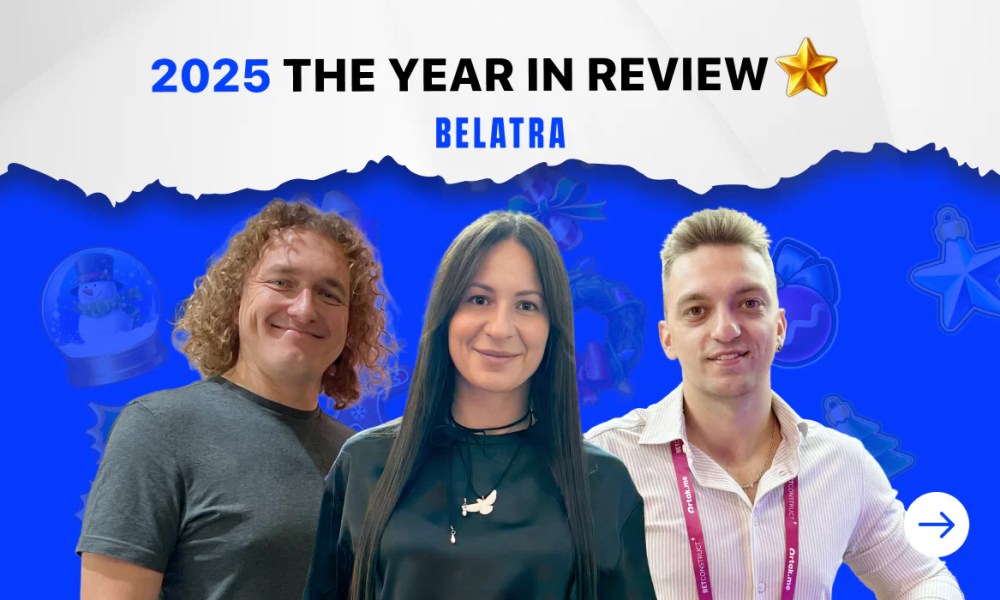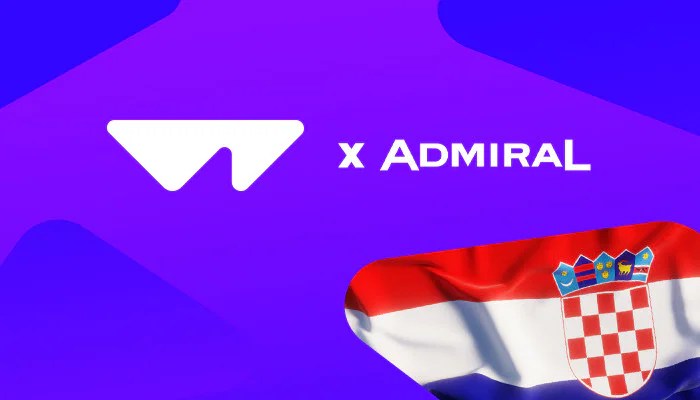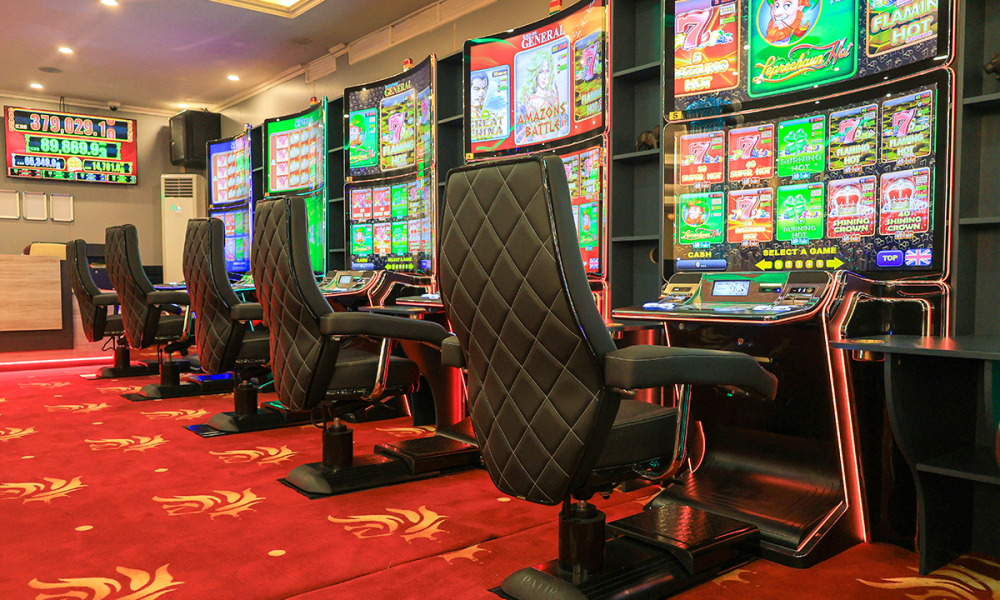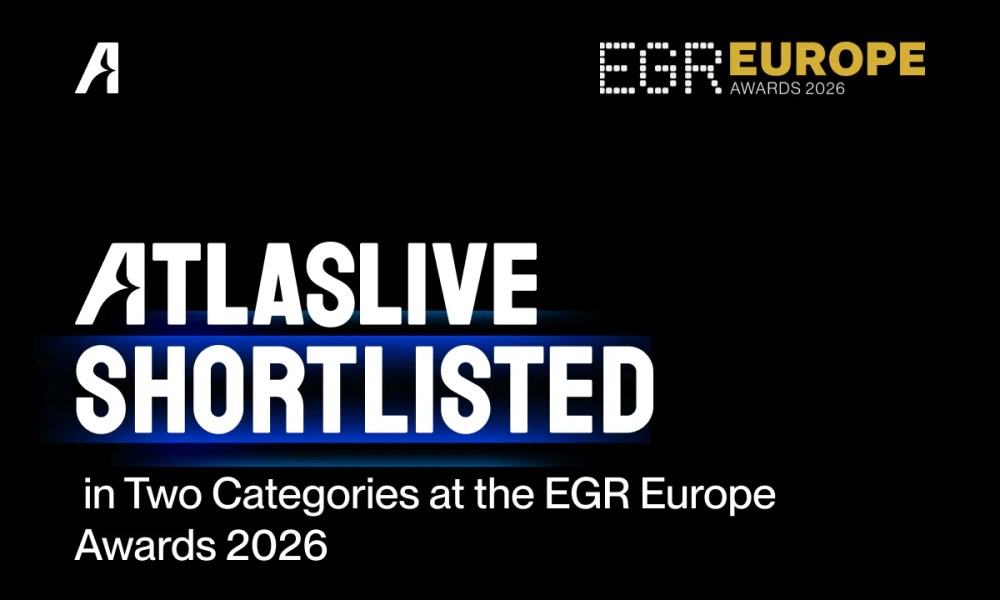Latest News
Exclusive CEE interview with Evoplay Entertainment

 Reading Time: 5 minutes
Reading Time: 5 minutes
With the CEE region no doubt set to be one of Europe’s biggest growth stories this year, we caught up with Evoplay Entertainment’s CBDO, Vladimir Malakchi, to talk through the region’s demographics, opportunities and hottest markets through 2021 and beyond.
The CEE region has become an increasingly important factor for growth on the continent, which markets do you see being the main drivers?
It’s all about the big-hitters that have an established framework in place, whether that be Bulgaria, Romania, Lithuania, Croatia or any of the other regulated markets. What we’ve seen in the last few years has been exponential in terms of growth, and that’s undoubtedly a good thing. Solid, concise frameworks that allow a safe and level playing field for both player and operator has created a wide berth of entry for multiple international brands across the region. Given the windfall on revenue for governments, rather than seeing GGR go offshore, will undoubtedly prove to be a good thing for local economies, and has already proven to be a significant contributor to national budgets.
In hand with that development comes a surge in the quality of gaming available – as well as a more advanced menu of entertainment experiences – whether that be table games, instant games or slots. I’m fully confident that the advantages of a safe, regulated market will continue to be felt by countries that have established a steady GGR growth rate and a favourable environment for doing business.
In general, how would you define the typical CEE player’s profile towards slots, instant and table games? What kind of entertainment are players looking for?
The typical CEE player mainly shares characteristics with those you’d find elsewhere in Europe. Having said that, the transition to online has indeed come later than in the West, so it is inevitable that we see games that have a lot in common with the land-base sector to appeal to players. We’re also seeing plenty of interest in instant games (especially when it comes to our stable of titles), which I believe to be a massive growth area. Why? The clue’s in the name – they give players a chance to enjoy instant entertainment, lighting-fast game rounds and a quickfire result.
Are there any particular territories that stand out for you as having a unique player demographic?
While we’re certainly not a brand that believes in a ‘one size fits all’ approach when it comes to global delivery, from personal experience I can say that the extent that one sees unique player demographics vary from country to country is relatively minimal. A greater factor that shapes delivery of product, and in effect defining the demographics of the players you deliver to in each market – is the infrastructure and accessibility. For example, with rural or highland areas, slower internet speeds are inevitable and therefore require more adaptable content that can either be leveraged via game engines to enhance the download speed, or alternatively through the application of light technical requirements for the game itself.
Having said that, CEE is digitising at an impressively fast pace. Heavy investment in high-speed broadband coverage can be observed throughout Europe, with 86% of the Czech Republic’s rural locations now connected to the internet, for instance, while Romania (as I’m sure any citizen there will be fast to tell you), has one of the fastest internet speeds in the world!
How should operators in the region be looking to tailor / customise their content to further drive retention and engagement?
There’s really no substitute for analysing the market in depth. That means closely studying the preferences of local players and the state-of-play for any potential competitors. Operators who get that process right can adapt their offering accordingly, thus driving revenue in the long-term.
We know that while session durations are relatively consistent across Europe, the average stake value is not. This is especially the case in the CEE region, where arguably the economic fallout from COVID-19 can be felt harder than most, which requires a gaming experience that can provide extended entertainment without draining player’s bank balances in minutes. This is especially the case for what is a hugely tech-savvy demographic – who are far more discerning than many outsiders would assume – and therefore require a solid product with the maths to back it up. Success here is all about authenticity, and players will recognise a lack of it from a mile off.
Gamification’s going to be a hot topic in the months ahead given the need for entertainment – as a market expert, what types of features do you believe will be key in 2021?
Tournaments are very strong right now – and formats that allow players to compete against each other in real time are going to be a mainstay in gaming development this year. I see this as being indicative that providing players with an additional sense of competition, such as pitting players against players through formats like multiplayer gameplay, is a whole new level of gamification in itself that can do wonders for making your products more interesting for your audience locked down at home.
I’m particularly excited about what multiplayer can offer, and we’re taking this area very seriously. They’re going to be a serious asset when it comes to providing an additional dimension of gameplay. Combine that with faster rounds with instant games (which are very hot right now), as well as the opportunity for more varied stakes – and you have a lightning-fast experience that can create a hugely exciting betting environment and really drive engagement and retention.
Ukraine of course is going to be very closely watched – how would you rate the regulation process so far and do you believe we’re on track to go live by mid-next year?
We’ve seen good progress in Ukraine since July last year when online gambling was officially made legal – and the government has been working hard to get a regulatory framework in place, with a commission already formed to monitor the issuing of licenses to casino operators.
It is also expected that the number of licences that the authorities choose to grant will be limited – this, just like we’ve recently seen in Argentina, means that we have a queue of foreign operators waiting for certification, and I predict will start seeing the results show in around six months. I look forward to contributing towards the creation of a safe and regulated gaming environment for all, as well as seeing the benefits that gaming revenue will bring to our national economy – just as it has for other regulated CEE territories. The future is certainly looking bright!
And last but not least, are there any leading figures or businesses you can recommend to our readers for 2021 inspiration?
The biggest source of inspiration to me personally continues to be the fantastic team of staff we’ve got right here at Evoplay Entertainment. The tremendous success we’ve enjoyed as a company drives me to strive for more, and I genuinely believe that when we work together as a company, there is almost nothing we can’t achieve.
Don’t be afraid to take inspiration from your own accomplishments, no matter how large or small. It’s a reminder that your greatest days lie ahead – something that’s particularly important to remember in the current circumstances!

Latest News
From ‘Mummyverse’ to Crash Games: Belatra Reviews a Landmark 2025
Editor’s Take
Why this matters: Belatra has been a steady hand in the slots world for a long time, but 2025 marked a distinct shift in strategy. By entering the Crash vertical with Goose Boom Bang and winning big at SiGMA Africa, the studio is clearly pivoting to capture the high-growth, high-frequency players in emerging markets. They are no longer just a “classic slots” developer; they are diversifying the portfolio to ensure relevance in regions like LatAm and Africa.
The Full Story
Belatra Games, the specialist online slots developer, has issued a strategic review of its 2025 operations, celebrating a 12-month period defined by entry into new game verticals, significant franchise expansion, and high-profile industry recognition.
The year was characterized by a dual strategy: deepening engagement in established markets while aggressively expanding its content portfolio to suit local preferences in emerging territories.
Portfolio Evolution: Crash and Battles 2025 saw Belatra move beyond its traditional slot roots. The company made its debut in the high-demand Crash game vertical with the launch of Goose Boom Bang, a title designed to tap into the fast-paced gameplay preference of younger demographics.
Additionally, the studio introduced a fresh game concept with the launch of Battles, a new format unveiled for the first time in 2025, with further development planned for 2026.
The ‘Mummyverse’ Expands For fans of classic slots, the highlight of the year was the aggressive expansion of the Mummyverse. Belatra nearly doubled the size of this franchise over the year, making it the most extensive game universe in their entire catalog.
The developer also focused on B2B localization, releasing a number of exclusive bespoke games created specifically for selected operator partners to meet specific local market tastes.
Awards and Recognition The company’s strategic shifts were validated by industry accolades. Belatra secured over 30 nominations throughout the year, with standout wins including:
-
Best Slot Provider (awarded by BitStarz).
-
Most Played Game of 2025 for Make It Gold at the SiGMA Africa Awards.
-
Player’s Pick Award.
Management Commentary Misha Voinich, Head of Business Development at Belatra, commented on the studio’s momentum:
“This year has truly defined who we are as a studio – ambitious, creative and focused on building long-term partnerships. We’ve expanded our universes, launched new ones and entered exciting new markets that will all help us carry this momentum into the New Year.”
The post From ‘Mummyverse’ to Crash Games: Belatra Reviews a Landmark 2025 appeared first on Gaming and Gambling Industry Newsroom.
Latest News
‘Chaos and Soul’: Ebaka Games Plots Global Expansion After Viral Launch
Editor’s Take
Why this matters: The “Instant Game” vertical (Crash, Plinko, Mines) is becoming crowded, but Ebaka Games is cutting through the noise with a distinct brand personality. By securing BMM Testlabs certification so quickly after launch, they are signaling to Tier 1 operators that despite their “chaotic” marketing vibe, the math underneath is solid and compliant. The backing of industry veteran Dmitry Belianin also adds immediate commercial credibility to the startup.
The Full Story
Ebaka Games, the fledgling studio that promises to bring “chaos and soul” to the iGaming sector, has outlined an aggressive growth strategy for 2026 following a landmark launch period in late 2025.
The studio, which officially debuted in November, reports that its initial rollout reached more than five million people worldwide. The launch saw its portfolio go live with the operator Menace, serving as the initial testbed for its mechanics and “Ebaka modes.”
The Product: Instant Games with Personality Ebaka is bypassing traditional slots to focus on the high-growth vertical of fast-paced, instant-win games. Their initial lineup includes:
-
Plinko
-
Mines
-
Tower
-
Limbo
-
Crash
Differentiation is achieved through unique mascots and signature gameplay tweaks designed to offer high win potential and distinct visual identities, moving away from the generic interfaces often found in this genre.
Regulatory Milestone Crucially for its 2026 roadmap, Ebaka Games has confirmed it has secured certification from BMM Testlabs. This accreditation validates the fairness and integrity of its RNG (Random Number Generator) and game engines, removing a major barrier to entry for regulated markets. With this certification in hand, the studio plans to launch with a number of “major brands” in the coming year.
Management Commentary Vitalii Zalievskyi, CEO of Ebaka Games, commented on the studio’s unorthodox approach:
“It’s only been a few weeks since we first introduced Ebaka Games to the world. The feedback has been breathtaking, and it vindicates the decision for us to take a different path to the rest of the industry. You don’t need huge marketing budgets to grab people’s attention if you are building something truly innovative.”
Industry Backing The studio describes itself as being “created by players for players” but boasts significant industry firepower in its corner. The team includes Dmitry Belianin, a well-known figure in the sector who is the co-founder of Blask and Menace, as well as Managing Partner at Already Media.
The post ‘Chaos and Soul’: Ebaka Games Plots Global Expansion After Viral Launch appeared first on Gaming and Gambling Industry Newsroom.
Latest News
Racing Meets Nightlife: SBK Backs ARC’s New ‘Friday Night Live’ Series
Editor’s Take
Why this matters: British racing has a well-documented demographic problem; its core audience is aging. “Friday Night Live” is a direct attempt to fix this by blending high-stakes racing with the “experience economy” (DJs, nightlife vibes) that appeals to Gen Z and Millennials. Bringing SBK on board—a mobile-first, app-only sportsbook—is a perfect demographic fit, while the Racing Post adds the necessary credibility to ensure the actual racing product remains the focus.
The Full Story
Arena Racing Company (ARC) has unveiled the strategic commercial lineup for its upcoming Friday Night Live series, confirming SBK as the Exclusive Betting Partner and The Racing Post as the Official Media Partner.
Set to launch in January 2026, Friday Night Live is a new initiative created in collaboration with youth-focused events company INVADES. The series is designed to overhaul the traditional race day experience, featuring fast-paced fixtures under floodlights, DJ sets, and significant entertainment elements sandwiched between races.
The Commercial Deal
-
SBK: As the exclusive betting partner, the Smarkets-owned sportsbook will take naming rights and on-course branding for all 35 races. Crucially, these races will be broadcast live on mainstream television via ITV Racing as well as Sky Sports Research.
-
The Racing Post: As the Official Media Partner, the publication will provide content, coverage, and promotion across its digital platforms, aiming to bridge the gap between established racing purists and the new audience ARC hopes to attract.
A High-Stakes Experiment The series is not just a marketing exercise; it carries serious sporting weight. Each of the five scheduled nights will feature over £200,000 in prize money. The fixtures will rotate across three of ARC’s all-weather tracks: Wolverhampton, Newcastle, and Southwell.
Management Commentary David Leyden Dunbar, Group Director of Commercial Strategy at ARC, was clear about the target audience:
“We have been very clear that one of the aims of Friday Night Live is to engage the next generation of racing fans… Both [partners] have shown real enthusiasm to work with us… as well as using the platform that these fixtures will offer them to also engage with more established racing and sports fans.”
Adam Baylis, Marketing Director at SBK, added:
“Friday Night Live [is] a fresh and engaging concept that brings a new energy to British racing. SBK has always been built around sport… our focus is on enhancing the live race day experience in a fun, social and responsible way.”
The 2026 Schedule The series kicks off immediately in the new year:
-
9th Jan: Wolverhampton
-
6th Feb: Newcastle
-
20th Feb: Southwell
-
20th March: Wolverhampton
-
27th March: Newcastle
The post Racing Meets Nightlife: SBK Backs ARC’s New ‘Friday Night Live’ Series appeared first on Gaming and Gambling Industry Newsroom.
-

 Latest News2 weeks ago
Latest News2 weeks agoSCCG Announces Strategic Partnership with Yellow Elephant Studios to Expand Multi-Channel Gaming Content Worldwide
-
Latest News2 months ago
JioBLAST Launches All Stars vs India powered by Campa Energy: A New Era of Creator-Driven Esports Entertainment
-
eSports1 month ago
CS:GO Betting Gains Momentum in the iGaming Sector
-
Latest News3 weeks ago
THE 2025 PUBG MOBILE GLOBAL CHAMPIONSHIP GROUP STAGE WRAPS UP WITH LAST CHANCE IN SIGHT
-
Latest News1 month ago
S8UL Esports acquires Team Elite’s Free Fire MAX roster to form S8UL Elite
-
Latest News2 months ago
RocketPlay wins Best Customer Service at European iGaming Excellence Awards
-
Latest News2 months ago
Kambi Group plc Q3 2025 Report
-
Latest News3 months ago
GGPoker Unveils Massive Weekly $100K Freeroll, Kicking Off October 18













You must be logged in to post a comment Login